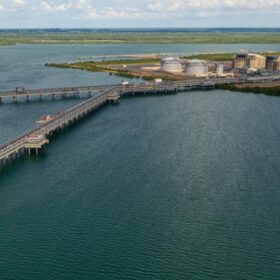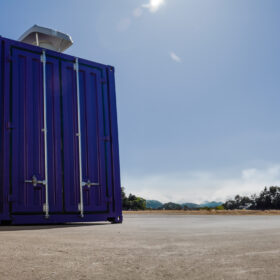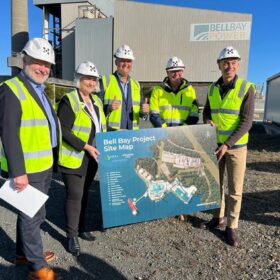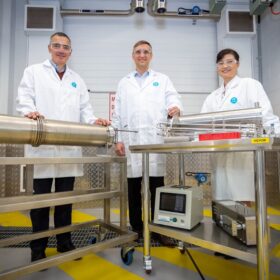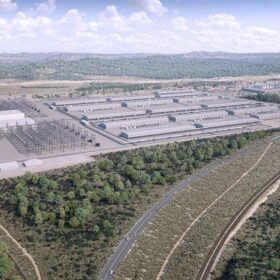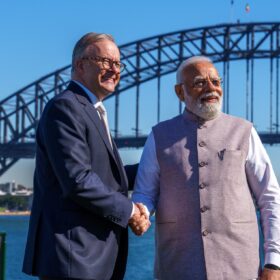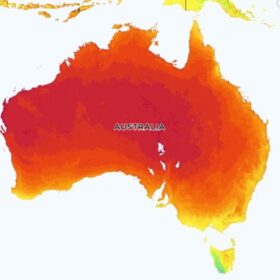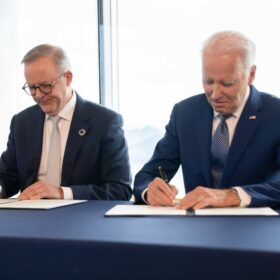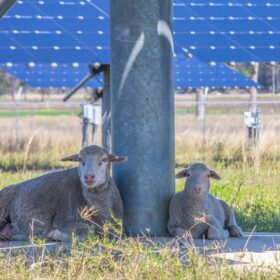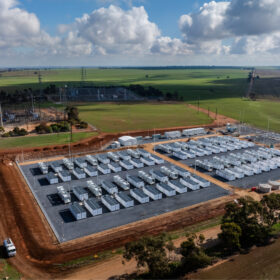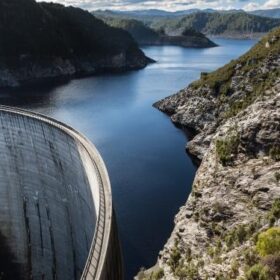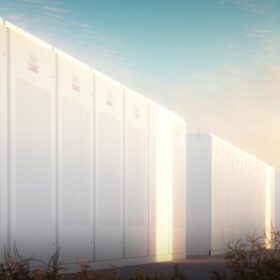IRA poses ‘real risk’ for Australia in global green hydrogen race
With less than 60 days remaining until the next raft of clean energy incentives outlined in the United States’ Inflation Reduction Act take effect, former Reserve Bank of Australia deputy governor Guy Debelle has warned the legislation poses a “material threat” to Australia’s push to become a green hydrogen superpower.
Japanese gas giant to lead Darwin ‘clean’ hydrogen study
Japanese oil and gas giant Inpex has been jointly awarded a $1 million (USD 670,000) grant by the Australian government to conduct a feasibility study into the growth potential of a ‘clean’ hydrogen market in the Northern Territory.
Brisbane company unveils 100 kW hydrogen battery using CSIRO tech
Queensland hydrogen battery startup Endua has installed its first 100kW standalone hydrogen power bank in south Brisbane. The news come weeks after the company raised $11.8 million (USD 7.81 million) to scale the technology.
Tasmania site secured for 240 MW green hydrogen project
Australian hydrogen developer Abel Energy and Spanish energy group Iberdrola are pushing ahead with plans to deliver a 240 MW green hydrogen and green methanol production facility in Tasmania, inking a deal to secure a site for the $1.2 billion (USD 79 million) project.
CSIRO gets $10 million to build portable hydrogen generator
Australia’s national science agency will seek to the address some of the challenges associated with storing and transporting hydrogen by developing an off-grid, portable hydrogen generator designed to recover the zero-emissions fuel from a liquid carrier at the point of consumption.
Funding confirmed for 3 GW green hydrogen project
Australia’s push to become a green hydrogen superpower has gained new momentum with the federal and Queensland governments teaming with consortium partners to deliver $117 million (USD 76 million) to progress a 3 GW renewable hydrogen project being developed near Gladstone on the central Queensland coast.
To be a hydrogen superpower, Australia requires 812 GW of renewables by 2050, BNEF says
To reach net zero by 2050, Australia will need 300 GW of wind and solar, and $413 billion (USD 2.72 billion) of investment, according to BloombergNEF. To reach hydrogen superpower status, that figure balloons to 812 GW of renewables and $739 billion of investment.
Australia and India establish hydrogen taskforce, deepen renewable ties
Australia and India will establish a Green Hydrogen Taskforce, with prime ministers today agreeing to the Taskforce’s terms of reference. The meeting strengthens ties between India and Australia in relation to renewable energy ambitions and manufacturing, with plans extending to critical mineral and solar manufacturing.
CIP plans 7 GW of electrolysis hub in Australia
Copenhagen Infrastructure Partners (CIP) has announced plans to develop an $30 billion (USD 19,95 billion) green hydrogen production hub on South Australia’s Eyre Peninsula, while a new research study shows the feasibility of gas-to-hydrogen pipeline conversion in Western Australia.
Australia signs new climate and clean energy deal with US
Australia and the United States have signed a landmark agreement with the two nations vowing to work collaboratively towards accelerating and expanding clean energy supply chains, renewable energy technologies manufacturing, and critical minerals supply.

